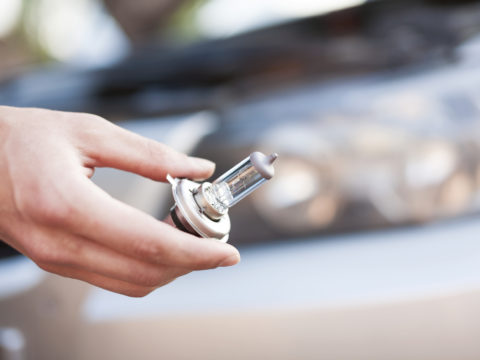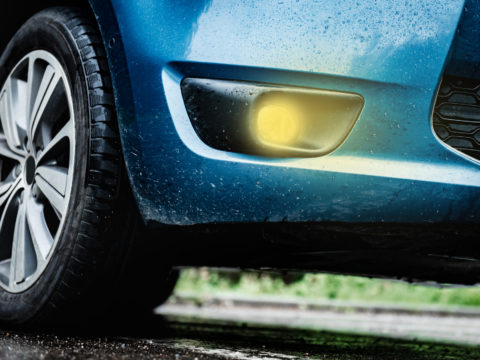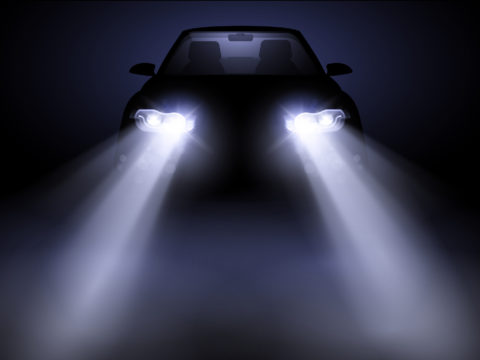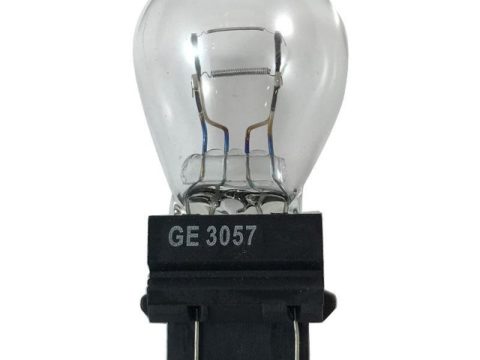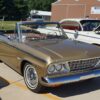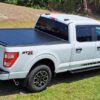When fog rolls in, the air fills with moisture, making it difficult to see far away. While it can be enchanting, driving in fog can be dangerous.
Therefore, taking proper precautions to deal with the fog is critical. One crucial question is, “What beams should you use in fog?”
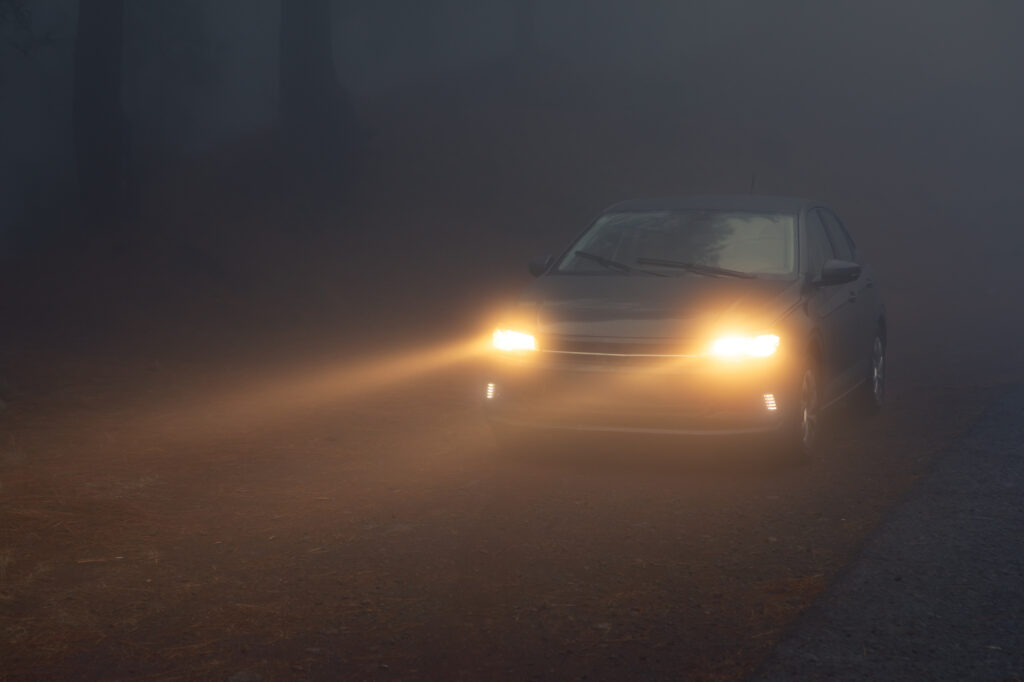
Contents
What Lights To Use in Fog
We all know that headlights help us see at night. But when driving in fog, they can also be helpful when used in the right setting. So what beams should you use in fog?
In most cases, it’s best to use your regular low beams when driving in fog. It may be tempting to turn on the high beams, also known as brights, but that usually causes worse visibility.
Do You Use Low Beams in Fog?
Yes, using low beams in fog is a good idea. If you have fog lights mounted low on your vehicle, turn those on in addition to your low beams.
Keeping the light source pointed down at the road is your best chance of good visibility in fog.
Should You Use High Beams in Fog?
Most of the time, you don’t want to use high beams when driving in fog. The additional light from high beams is directed higher in the air.
When there is fog around, it reflects this extra light and makes it more challenging to see.
Low Beam Headlights vs. High Beam
Nearly all vehicles come with two settings for the headlights. The regular setting is the low beam, which is the appropriate light for most circumstances.
They help illuminate the way but keep the light pointed toward the road and not in the eyes of other drivers.
High-beam headlights are a setting used to increase the luminosity of your lights. They are usually a second bulb inside the headlight unit.
High Beam Headlights Symbol
When the high-beam headlights are on, you’ll usually see a small symbol on your dashboard or instrument cluster.
Most often, the symbol has a few horizontal lines coming out of a D-shaped figure representing a light.
Low Beam Headlights Symbol
While some vehicles have a low beam symbol, many don’t.
But you can tell that your low beams are on because other internal lights will also illuminate or change luminosity, including your dashboard, instrument cluster, and in some cases, the infotainment system or HVAC controls.
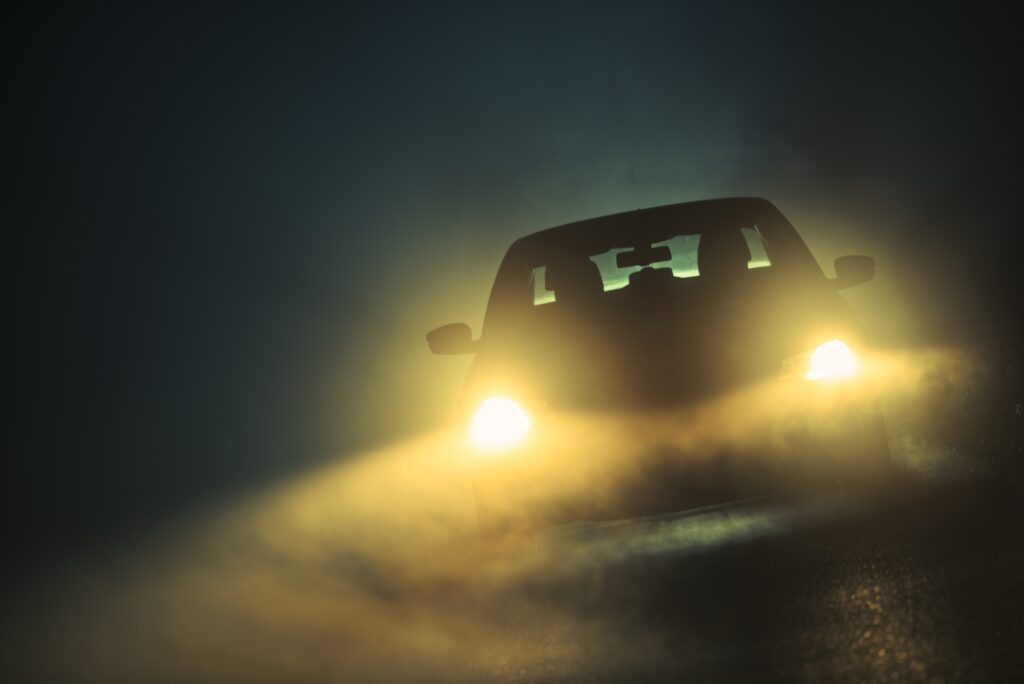
When Do You Use High Beam Lights?
Using your high beam lights should be done with care. Blinding other drivers is a serious concern, and that’s why you only want to use high beams when you are not close to other drivers, even when traveling in the same direction.
High beams are great for driving in low-light, rural areas. They can help you see obstacles in the road and allow you to spot turns, stops, and other vital information.
But when other drivers approach, turn off the high beams to avoid blinding them.
When To Use Low Beam Lights
Low-beam lights are to be used regularly to provide light when needed. Of course, turning on your low beams at night is a good idea. But it’s not the only time to use them.
Also, turn on your low-beam headlights when driving in poor weather, including rain, snow, and fog.
They help you see and let other drivers know your position.
Helpful Tips for Driving in Fog at Night
It can be scary to drive in fog at night. But if you use these tips, you’ll be able to get to your destination safely.
Slow Down
The most important tip for driving in fog is to go at an appropriate speed. While following the speed limit is usually sufficient when the driving conditions are normal, that’s not true in fog.
You should drive slowly enough to stop if something gets in your way, meaning slowing down until your stopping distance meets your visible distance.
Since it can be challenging in fog, the speed you need to go might be slow.
Use Low Beams
Using proper lights is a great way to make driving in fog easier. Turn your low beams on, even in the daytime, so that you can see the road and other drivers can easily spot you.
What beams should you use in fog? Your low beams are the right choice in most circumstances.
Fog Lights
If your vehicle has fog lights, they can help illuminate the way. Fog lights produce low-lying light that gets under fog layers.
There are laws around the use of fog lights in some states, so make sure to use them in accordance with local laws.
FAQs
Here are some frequently asked questions about what beams you should use in fog.
Are fog lights the same as full beam?
Fog lights are not the same as full-beam lights. Fog lights are small lights placed low on the front end of some vehicles.
Full beam lights usually refer to using your high beam or brights, which are a part of the headlamp assembly.
Do all cars have fog lights?
Now all cars are equipped with fog lights. For some models, they are an extra option or only available on specific trim levels. Other vehicles don’t have fog lights as a factory option.
Are low beam and high beam the same bulb?
On most cars, low-beam and high-beam headlights come from two separate bulbs. The high beam only turns on when the setting is engaged, while the low beams are on whenever your headlights are on.
Some vehicles have single bulbs with dual filaments providing both low- and high-beam lights.
Are fog lights brighter than headlights?
Fog lights are usually not as bright as headlights. Instead, they are positioned close to the ground and illuminate a short distance ahead.
However, fog lights can seem brighter to people in front of you because they might shine higher, so it’s critical to use them following local laws.
Are fog lights illegal?
The laws and regulations around the usage of fog lights vary by state. Some states prohibit using fog lights in clear conditions because they can distract other drivers and make it difficult to see.
Other laws can apply to fog lights and their usage, so it’s best to check your local laws.

